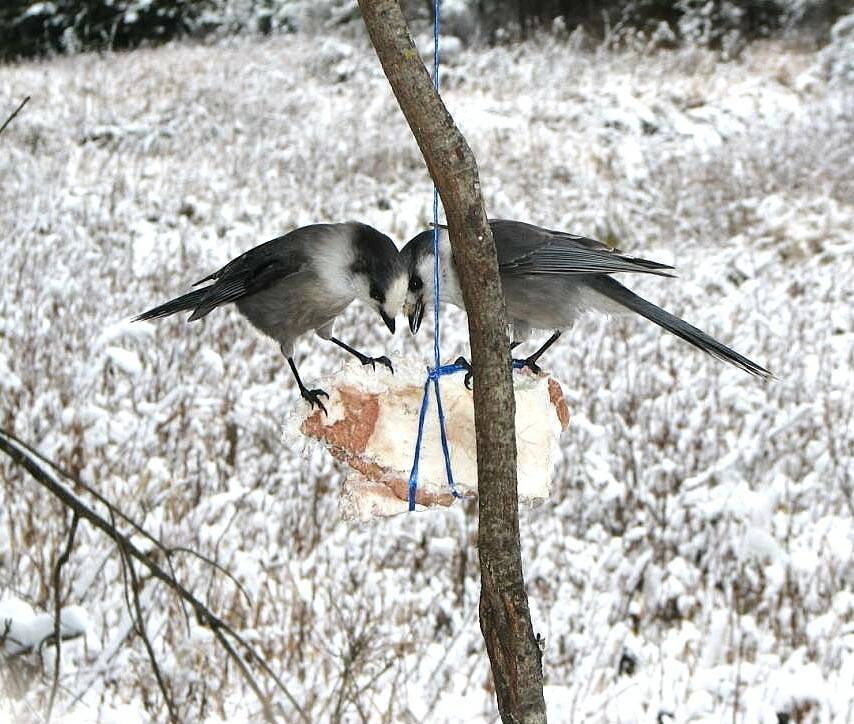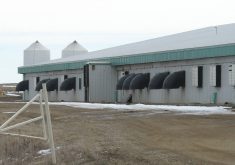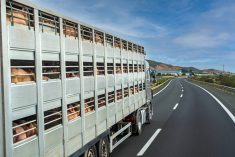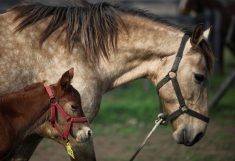Manitoba is not on the right track when it comes to porcine epidemic diarrhea (PED).
That was the unfortunate news from Manitoba Pork general manager Cam Dahl in the third week of June, with the province still embroiled in its most serious outbreak of the disease to date.
“This is the time of year where we traditionally see an uptick in cases and I’m concerned that that’s going to happen again and we’ll see a new wave,” he said. “I hope not, but I am concerned about that.”
Read Also

Hunting with whiskey jacks
Canada jays, or whiskey jacks, are bold little deer hunting pals that don’t mind getting close, if it means a piece of the offal or deer fat left over from a successful forest hunt in Manitoba.
Why it matters: The infamous neonatal disease is linked to 80 to 100 per cent losses of piglets in the first two weeks of life and comes with a serious financial hit for any infected barn.
As of June 15, Manitoba’s case count had reached 114 since the start of the 2021-22 outbreak, according to Dr. Glen Duizer of the province’s office of the chief veterinary officer (CVO).
- [READ MORE] Manitoba pork sector to hone PED strategy
Prior to 2021, Manitoba’s PED record sat at 82 cases in a single outbreak, registered in 2019.
The pork sector had held out some hope of a break in February. Cases had dropped off after the 74th confirmation and no new cases were discovered until a week into March.
The reprieve ended as spring 2022 got underway however. Between the start of March and start of June, about 30 additional cases were confirmed. Even more unfortunately, according to the hog sector, cases within the month of June included a new spate of sow barns — a class of barn that had not seen new cases since the end of March and, with young piglets taking the brunt of the virus, the largest hit to the sector.
Despite the gap, the province is treating current cases as the same outbreak that began in late October 2021.
“If you have a piglet that is three, four weeks of age that has been exposed to PED and ends up having it… even though they recover, they can periodically start shedding again any time throughout their life cycle,” Duizer said.
That pig must have cleared the value chain before the risk posed can likewise, can be considered clear.
“With that ongoing risk and with multiple farms continuing on and breaking, we see the risk extending out, and because the risk is extending out, the outbreak is extending out,” Duizer said.
- [READ MORE] Squeal on Pigs gets loud on wild swine
Roughly 95,000 to 105,000 sows have been affected by the outbreak, according to the CVO. Duizer stressed that those numbers are based on maximum capacity of premises, since an entire barn is considered infected once a single animal with PED is confirmed.
Of the 113 cases reported as of June 10, 86 were still positive, while 13 were transitioning, 13 were presumptive negative and one was considered totally cleared, according to Manitoba Pork. Barns are considered presumptive negative if all animals have been cleared, but PED risk remains in manure storage.
“We would have liked to see those positive cases transitioning a little bit faster as well,” Dahl said. “So yeah, it’s not the best of news on the PED front.”
Most cases in late May and the beginning of June were related to known animal movement, he said, although in a number of recent cases, the cause of infection is less clear.
Duizer noted, however, that new cases have been closely clustered to existing infections, which is more typical of past outbreaks, while a number of cases earlier this year had cropped up away from established buffer zones.
Those cases, he now said, were likely due to a human-error vector such as issues with transport cleaning and disinfection.
Outlook
It is not clear when the sector can expect the normal slowdown in cases, Duizer said.
The calendar has now ticked over into the typical risk period for PED, with manure spreading and other usual risk vectors in play.
“There is a lot of aggressive work to try and bring this under control and make that downtime happen,” he said, adding that the slowdown will, “certainly” be extended out into the fall.
“The implications of that is that we have a very large number of farms that have been infected and a lot of contamination on those farms that needs to be handled and dealt with so that it does not generate new cases,” he said.
One saving grace, Duizer noted, is that while Manitoba is seeing record numbers in the prolonged outbreak, it has not seen the sudden spikes of cases sometimes seen in May and June.
Flooding
Flood conditions may well increase PED risk, Duizer said, much like transportation and labour crunches exacerbated spread during the early months of 2021. He stressed, however, that he does not have hard evidence that links specific cases to flood-related vectors.
At the same time, he reasoned, flooding did limit transportation on certain roads, complicating biosecure routing used by the sector to curb disease spread.
“Flooding, road closures and the limitations that it might create for manure application, all of those things put pressure on managing the risk and, when you do that, then the risk gets higher,” he said.
Southeastern Manitoba, which has seen all but four cases in 2022, also saw serious flooding along the Red River Valley and widespread overland flooding this year. It is the first time the region has seen such widespread flooding since before the first PED outbreak to breach double digits in 2017.
Dahl argued that Manitoba Pork did not see an impact from flooding on PED response.
He also said that no lagoons were overrun from the flooding, since barns and lagoons are built to the levels of the 1997 ‘Flood of the Century.’
Working group
Results from a value-chain working group, announced earlier this year and with a mandate to evaluate PED control in other regions and how they might apply to Manitoba, is now expected in July, Dahl said.
“I can say that the working group has looked at quite a number of the different options, whether it’s just treating it as an endemic disease or continuing on with the eradication,” he said.
Veterinarians, producers, the CVO, and groups like the Western College of Veterinary Medicine have been cited as part of the working group.
Manitoba Pork had originally hoped to release findings earlier in the year.
















